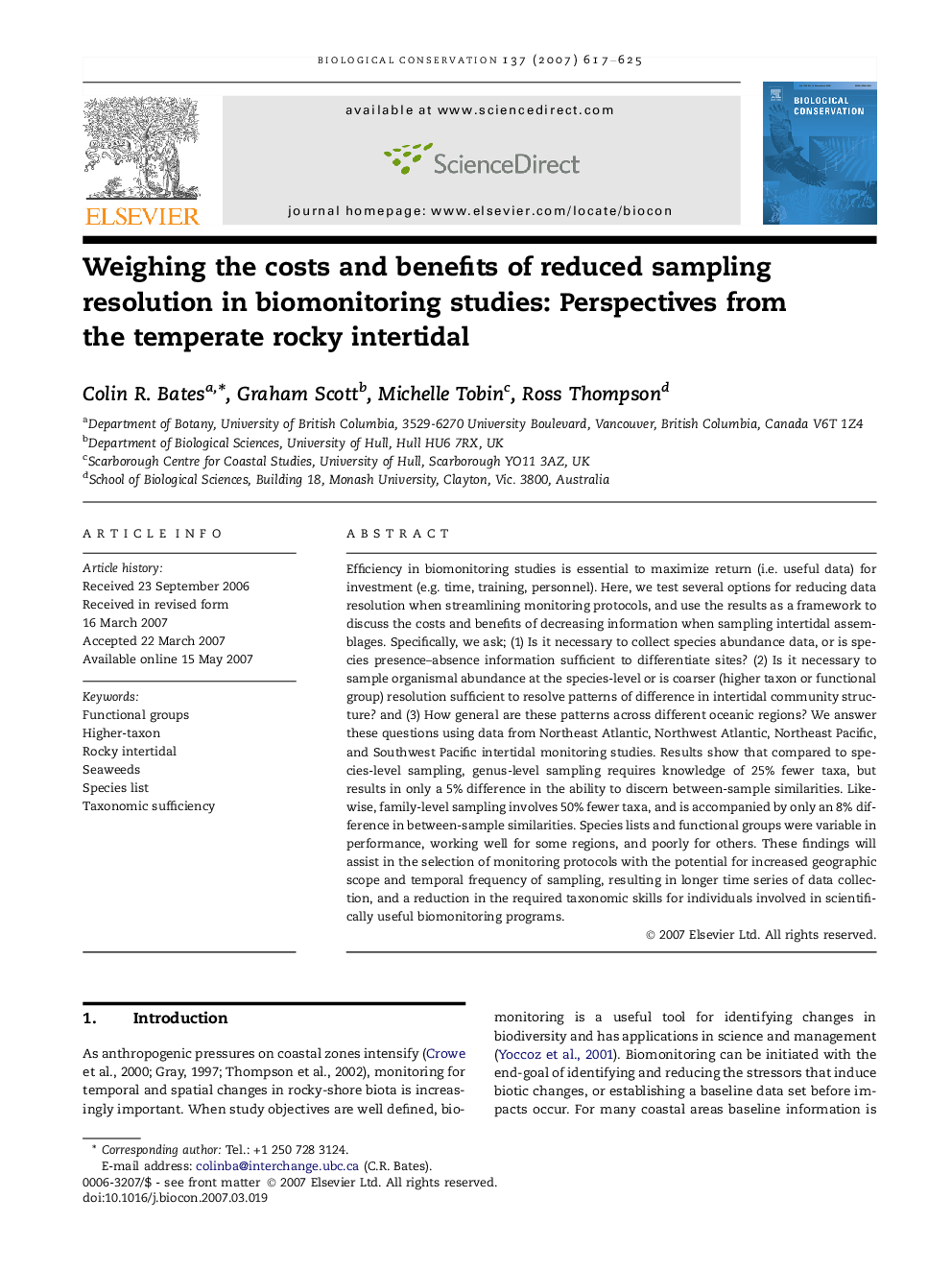| کد مقاله | کد نشریه | سال انتشار | مقاله انگلیسی | نسخه تمام متن |
|---|---|---|---|---|
| 4387087 | 1304588 | 2007 | 9 صفحه PDF | دانلود رایگان |
عنوان انگلیسی مقاله ISI
Weighing the costs and benefits of reduced sampling resolution in biomonitoring studies: Perspectives from the temperate rocky intertidal
دانلود مقاله + سفارش ترجمه
دانلود مقاله ISI انگلیسی
رایگان برای ایرانیان
کلمات کلیدی
موضوعات مرتبط
علوم زیستی و بیوفناوری
علوم کشاورزی و بیولوژیک
بوم شناسی، تکامل، رفتار و سامانه شناسی
پیش نمایش صفحه اول مقاله

چکیده انگلیسی
Efficiency in biomonitoring studies is essential to maximize return (i.e. useful data) for investment (e.g. time, training, personnel). Here, we test several options for reducing data resolution when streamlining monitoring protocols, and use the results as a framework to discuss the costs and benefits of decreasing information when sampling intertidal assemblages. Specifically, we ask; (1) Is it necessary to collect species abundance data, or is species presence-absence information sufficient to differentiate sites? (2) Is it necessary to sample organismal abundance at the species-level or is coarser (higher taxon or functional group) resolution sufficient to resolve patterns of difference in intertidal community structure? and (3) How general are these patterns across different oceanic regions? We answer these questions using data from Northeast Atlantic, Northwest Atlantic, Northeast Pacific, and Southwest Pacific intertidal monitoring studies. Results show that compared to species-level sampling, genus-level sampling requires knowledge of 25% fewer taxa, but results in only a 5% difference in the ability to discern between-sample similarities. Likewise, family-level sampling involves 50% fewer taxa, and is accompanied by only an 8% difference in between-sample similarities. Species lists and functional groups were variable in performance, working well for some regions, and poorly for others. These findings will assist in the selection of monitoring protocols with the potential for increased geographic scope and temporal frequency of sampling, resulting in longer time series of data collection, and a reduction in the required taxonomic skills for individuals involved in scientifically useful biomonitoring programs.
ناشر
Database: Elsevier - ScienceDirect (ساینس دایرکت)
Journal: Biological Conservation - Volume 137, Issue 4, July 2007, Pages 617-625
Journal: Biological Conservation - Volume 137, Issue 4, July 2007, Pages 617-625
نویسندگان
Colin R. Bates, Graham Scott, Michelle Tobin, Ross Thompson,